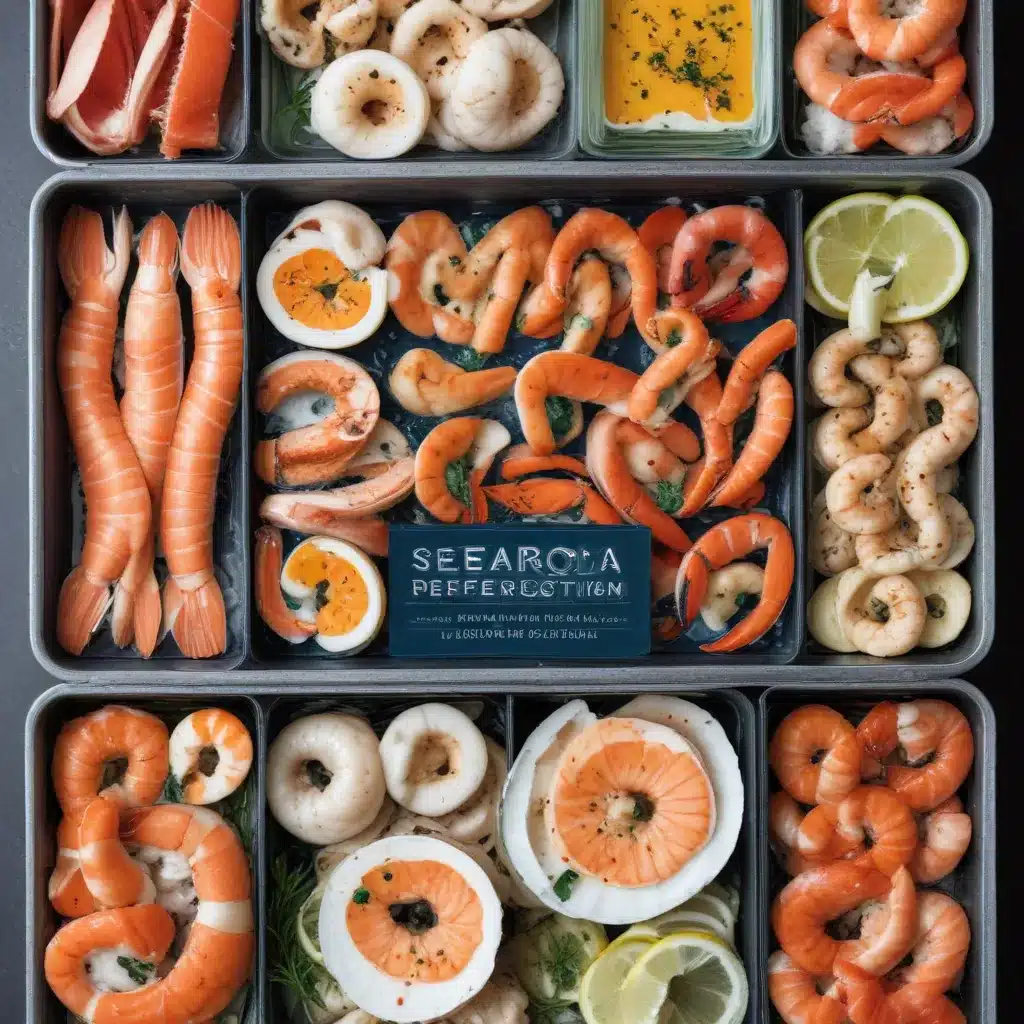
Seafood enthusiasts, take note: perfecting the storage and preparation of your cod and other oceanic delicacies is the key to unlocking their full culinary potential. Whether you’re a seasoned chef or a seafood novice, mastering the art of preservation can transform even the humblest filet into a gastronomic masterpiece.
At Fish Tales Cafe, we pride ourselves on our extensive knowledge of all things aquatic. From the freshest ceviche to the most succulent en papillote preparations, we’re here to guide you through the ins and outs of seafood storage and handling. By understanding the optimal temperature, packaging, and shelf-life considerations for your favorite finfish and shellfish, you’ll be well on your way to crafting exceptional and delicious seafood creations in your own kitchen.
Seafood Preservation Techniques
Refrigeration Essentials
The key to maintaining the quality and freshness of your seafood is proper refrigeration. Whether you’re storing cod, salmon, or shrimp, the ideal temperature range is between 32-40°F (0-4°C). Any warmer, and you risk bacterial growth and spoilage; any colder, and you may encounter undesirable textural changes. Be sure to store seafood on the bottom shelf of your fridge, where temperatures are most consistent, and keep it tightly wrapped or sealed in an airtight container.
Freezing Methods
For longer-term storage, the freezer is your friend. Cod, fillets, and other seafood can be frozen for 3-6 months when properly prepared. Start by rinsing the fish under cold water and patting it dry. Then, wrap it tightly in plastic wrap or freezer paper, removing as much air as possible. Alternatively, you can store seafood in resealable freezer bags, submerging them in a water bath to expel excess air. When ready to use, thaw the seafood in the refrigerator, never at room temperature, to prevent bacterial growth.
Canning and Jarring Approaches
Canned and jarred seafood can be a convenient and shelf-stable option, with a typical lifespan of 2-5 years. Look for canned tuna, salmon, or sardines packed in water or oil, and ensure the containers are free of dents, bulges, or other signs of damage. When it comes to jarred seafood, mignonette sauces, marinated mussels, and pickled herring are all excellent choices that can be stored at room temperature.
Optimizing Seafood Freshness
Temperature Control Considerations
Maintaining the proper temperature is crucial for preserving the quality and freshness of your seafood. Whether purchasing from the market or storing at home, be sure to keep your cod and other finfish on ice or in a cooler to prevent warming. This is especially important during transport, as fluctuations in temperature can quickly lead to spoilage.
Packaging and Containment Options
The way you package and store your seafood can also significantly impact its shelf-life. Opt for airtight containers, resealable bags, or vacuum-sealed pouches to minimize exposure to air and moisture. For maximum freshness, avoid stacking or crowding seafood, as this can restrict airflow and lead to uneven cooling.
Shelf-Life Maximization
Understanding the typical shelf-life of various seafood items can help you plan your meals and ensure you’re always working with the freshest possible ingredients. Cod, for example, is best consumed within 1-2 days of purchase when stored in the refrigerator. Shrimp and other shellfish, on the other hand, may last 3-5 days. Canned and jarred options can typically be kept for several months, provided the containers remain undamaged.
Culinary Seafood Applications
Preparing Fresh Seafood
When working with fresh cod or other finfish, it’s essential to handle it with care. Gently rinse the seafood under cold water, pat it dry, and use it within a day or two for optimal flavor and texture. For delicate preparations like sashimi or ceviche, sourcing the freshest possible ingredients is paramount.
Utilizing Frozen Seafood
Frozen seafood can be a fantastic option, especially when fresh is not available. Simply thaw the fish or shellfish in the refrigerator, then prepare it using your preferred cooking method, be it pan-searing, baking, or poaching. Avoid refreezing thawed seafood, as this can compromise texture and flavor.
Canned and Jarred Seafood Recipes
Canned and jarred seafood can be a game-changer in the kitchen, providing a convenient and shelf-stable alternative for recipes year-round. Tuna salad, smoked salmon dip, and marinated herring are all delicious ways to incorporate these pantry staples into your culinary creations.
Nutritional Benefits of Seafood
Protein and Nutrient Profiles
Seafood is a powerhouse of essential nutrients, including high-quality protein, healthy fats, vitamins, and minerals. Cod, for example, is an excellent source of lean protein, B vitamins, and the essential mineral selenium. Incorporating a variety of seafood into your diet can help support overall health and wellness.
Health Advantages of Seafood
Numerous studies have linked regular seafood consumption to a host of health benefits, from improved heart health to better brain function. The omega-3 fatty acids found in fatty fish like salmon and mackerel are particularly beneficial, helping to reduce inflammation and support cognitive function.
Sustainable Seafood Choices
When selecting seafood, it’s important to consider the environmental impact of your choices. Look for sustainably sourced options, such as wild-caught cod or farmed mussels, to ensure you’re making a responsible and eco-friendly decision. By supporting responsible fishing and aquaculture practices, you can enjoy the delicious flavors of the sea while doing your part to protect our oceans.
Whether you’re a seasoned seafood enthusiast or new to the world of cod and other oceanic delicacies, mastering the art of storage and preservation can unlock a world of culinary possibilities. By following the expert tips and strategies outlined here, you’ll be well on your way to crafting exceptional, healthy, and delicious seafood dishes in your own kitchen. So, dive in and start exploring the vast and flavorful depths of the sea!

